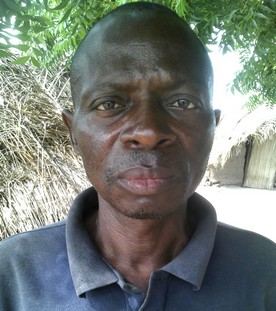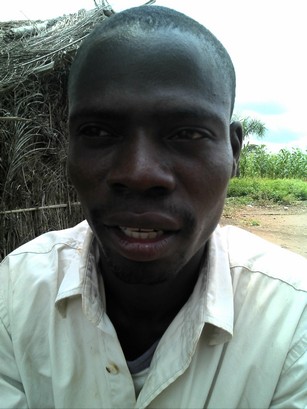The Fair Trade Platform
The Concept
It is not easy to describe the concept itself with a drawing, as a multitude of interactions are the basis of the system. Instead, we will describe a typical case in the domain of coffee that will be the first sector to make the concept concrete into commercial reality.
The customer is always right! This adage says a lot about it! It is for this reason that many companies developing and marketing products develop approaches to make their customers understand that their product meets their aspirations. These companies do not hesitate to create many certifications and labels for their own business, in order to convince potential customers that their products meet the standards concerning health, fair trade, environmental protection and organic farming without any other external organization to control it.
On the other hand, certification organizations recognized for fair trade, organic production or environmental protection, lead to significant costs for the producer in order to get the certification before it can even generate profits. This procedure is not accessible to small producers, particularly in the southern hemisphere.
The concept of solidarity trade that we are developing aims to integrate small producers into a process of continuous improvement linked with demand, whose costs will be paid for thanks to the fact that the chain of intermediaries will actually be shorter, and that substantial savings will be achieved by buyers who will commit to support production by given to producers a part of is benefit proportionally to their productions.
By facilitating the process of direct purchases, the solidarity trade platform will allow a part of the chain to generate more profits compared to the standardized business processes for the concerned type of product. These additional profits will be, partly, transferred to producers and, for the rest of it, be used to pay the audit process conducted by consumers themselves.
In the end, there is no additional cost for the consumer; the producer receives a gain on its production that will allow him to improve his quality of life and his production, while intermediaries that are fewer, get customers that care about the impact of their purchases and benefit from a loyalty system that will allow them to improve their sales and profits.
While all this sounds simple, in order for the system to be operational, we need to make sure that the number of intermediaries will be really reduced and that the profits generated by direct purchases will be substantial, in order to retain both producers and consumers, and that, in an international business environment that is undergoing constant changes.
This is only from the moment the producers will have received the gains that will have improved their quality of life that we will be able to discuss about investments in time, money and energy to make organic production by reducing their environmental impact. These requests will come directly from the needs of consumers who will be linked with these producers and their partners. Changes in practice will not be commanded but negotiated.
To help implement this concept, we have created and developed an interdependent fair trade platform to link producers with buyers. The elements that are the base of this platform are:
- A registration system for producers including some of their socio-economical characteristics;
- A monitoring method regarding the changes in the quality of life of producers;
- A product traceability protocol;
- A direct purchasing system for products and their traceability;
- A registration system for second-processors (commodity buyers) and retailers as well as the tracking of their transactions;
- A retrocession protocol (share) for profits from retail sales to the producers, in proportion to their production;
- A group purchasing system allowing to reduce transaction and transport costs;
- A registration and loyalty system for customers;
- A citizen control for retrocessions (gain);
- An improved marketing approach enabling consumers to participate in an innovative fair trade program at various levels of commitment;
- A modern communication tool enabling transparency at all stages;
- The ability for a consumer to query the producer's database and get information on the impacts (effects) of transactions on the latter.
How Far Have We Got ?
A first version of the computerized solidarity trade system has been developed over the last 18 months. This system is functional and is at the test phase. It includes most of the functions intended for the concept:
- Identification and characterization of producers and their standard of living;
- Registration of primary processors;
- Recording of productions acquired by primary processors;
- Registration of secondary processors;
- Recording of intentions to buy from secondary processors and creation of virtual containers for group purchases;
- Registration of distributors;
- Loyalty System;
- Random draw system to select the consumers wanting to participate in the realization of system audits on the production site.
Although this system works and will achieve the set objectives, we believe we can improve it on several levels.
For the identification of producers characterization phase, we want the latter to be registered and get an electronic smart card that will hold all of its information and on which all the sales it has made to the primary processor are recorded.
This smart card will serve as a unique identifier and will also be very useful during audits carried out by consumers that will be able to read the information of each producer using a simple electronic device and thus check whether the information about production and gains retrocession corresponds to what is recorded in the public database.
RFID technology combined with databases that are automatically accessible on the web, will greatly limit the input of information and communication costs and will facilitate daily update of information in the centralized database since primary processors will have their data stored in the RFID readers that will automatically synchronize with the online database as soon as they will have access to a telephone network.
The loyalty system is currently limited to an online order of bonuses, based on points accumulated, and subscription to the random draw for the realization of control audits. Since the concept is based on networking, we feel like it is essential that the loyalty system enable any consumer to obtain these bonuses from any distributors linked with the solidarity trade network. Again, we believe that the RFID solution and/or via smart phones could help perform this task appropriately. However, we want this system to be very fluid and only lead to a few additional tasks at the distributors level.
We believe in the power of networks and that of solidarity. Because of these beliefs, we intend to continue our development through a crowd-funded financing. This funding will help optimize the platform, start the system by implementing it in the coffee sector and collect interests from the secondary processors and retail traders of this sector.















